| Blue painters tape vs. Green painters tape | ||
| Blue painters tape | Green painters tape | |
| Thickness | 118 µm | 78 µm |
| Strength | 36 N/cm | 28 N/cm |
| Adhesion | 2.5N/cm | 0.65N/cm |
| Max temperature | 65°C | 65°C |
| Conformable | Medium | Excellent |
| Clean Lines | Medium | Excellent |
| Bleeding | Maybe | Wihtout |
| Residue | 21 days Wihtout | 14 days Wihtout |
| UV-Resistant | None | 5-9 days |
| Moisture-Resistant | Excellent | Medium |
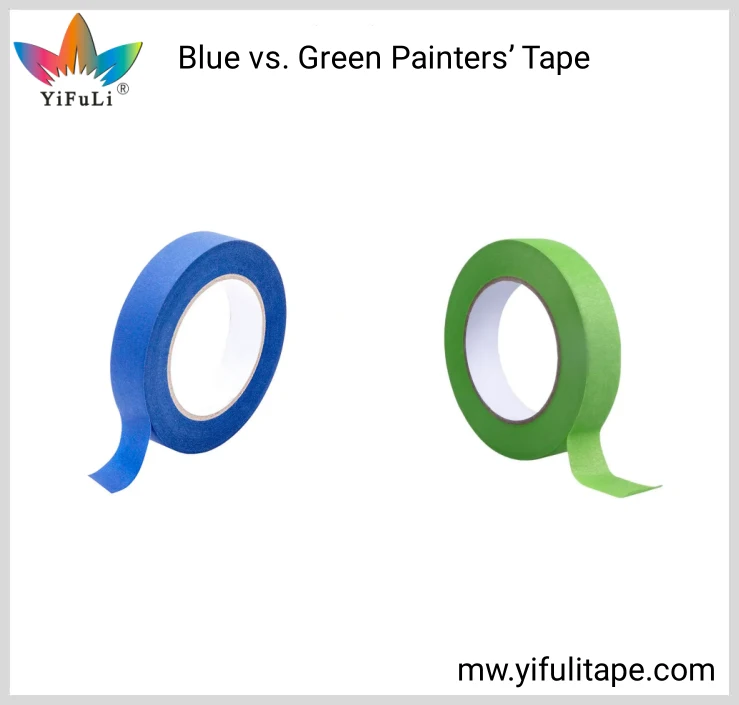
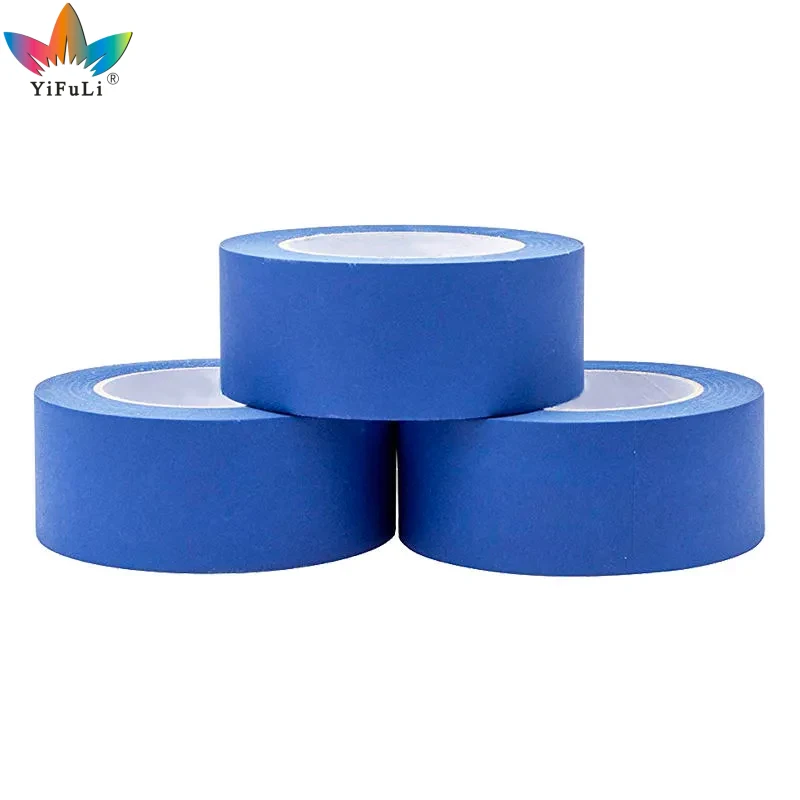
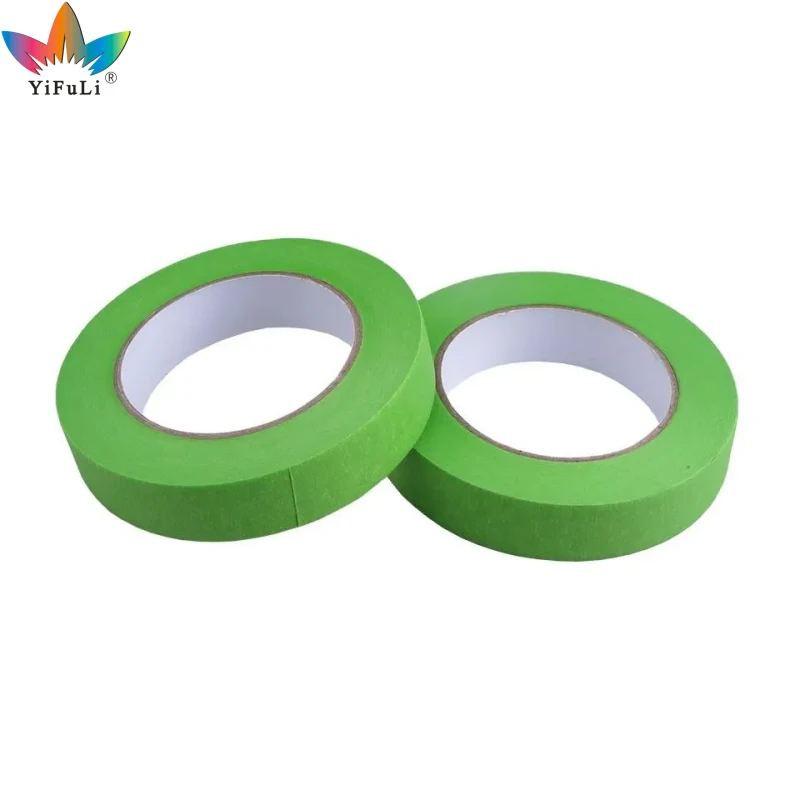
Indispensable in a painter’s tool kit is painter’s tape, which is used to cover walls and protect floors, windows, and other objects. Painter’s tape helps you create crisp, sharp lines and professional results for a smoother paint job.
In the past, ordinary tape, such as one or two rolls of cheap light pink masking tape, was enough to get the job done. However, due to poor quality, these tapes tended to allow paint to seep through, and some areas would be damaged. Today, there are a variety of professional painters tapes on the market for people to choose from. For many painting projects, the best painters tape is usually the one that people choose the most blue vs green painters tape.
Blue painters tape
Blue painter’s tape is ideal to use when painting. It has a clean removal adhesive that sticks perfectly to the wall while you do your paint job and removes easily within 21 days with no residue. This blue tape is built to handle a variety of project needs and outperforms other painters’ tapes on the market in terms of quality.
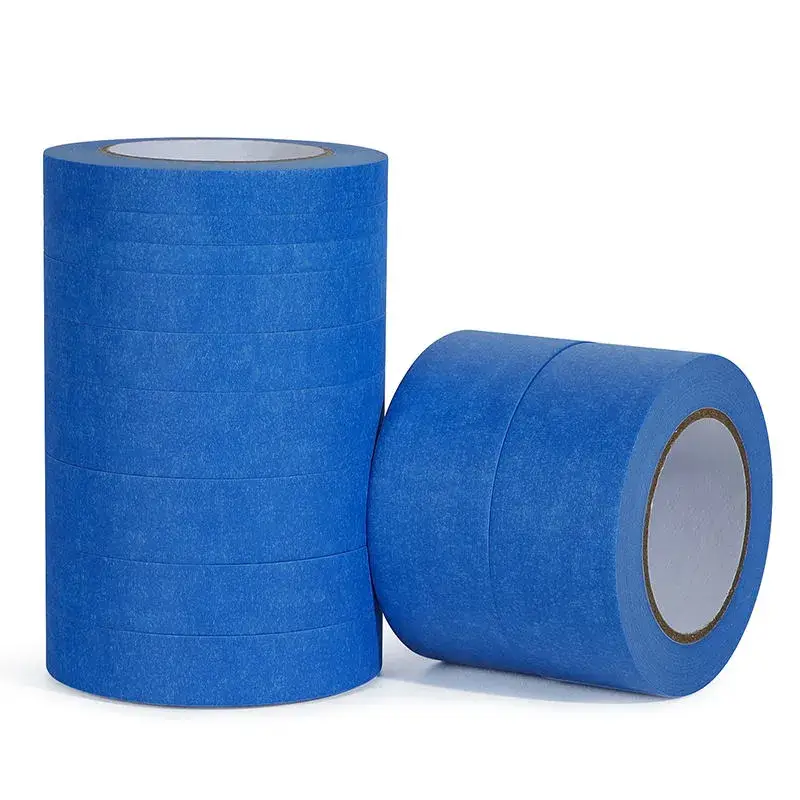

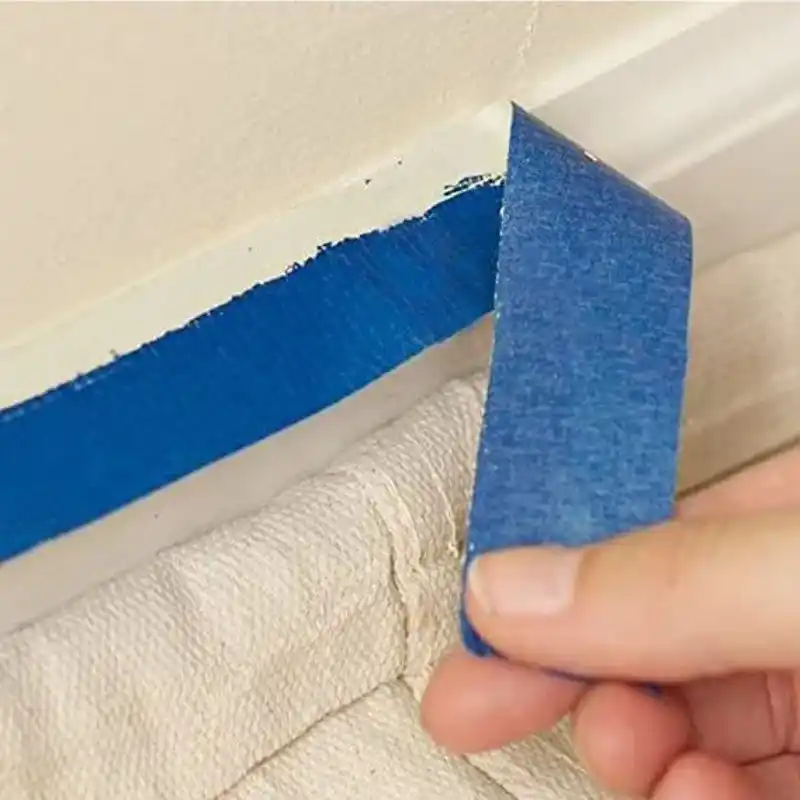
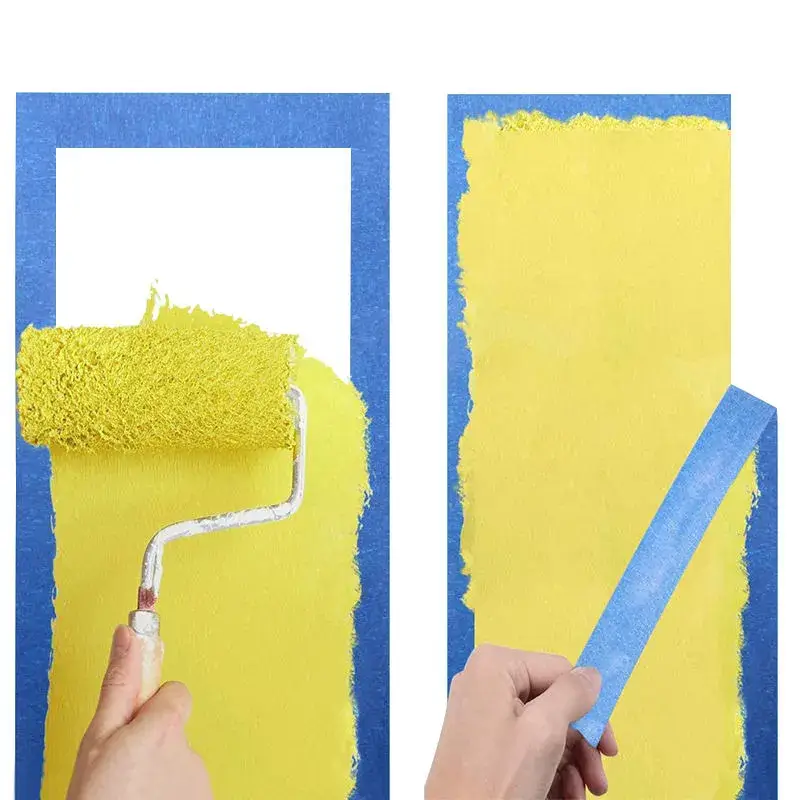
Green painters tape
For projects that require a higher tack tape, green painter’s tape can be used for the treatment. In contrast, blue painter’s tape has a medium tack and is more versatile. However, rough and uneven surfaces may be more than blue tape can handle. To solve this problem, opt for green painter’s tape, which has a higher tack and is designed to handle uneven surfaces, rugged edges, and outdoor areas.
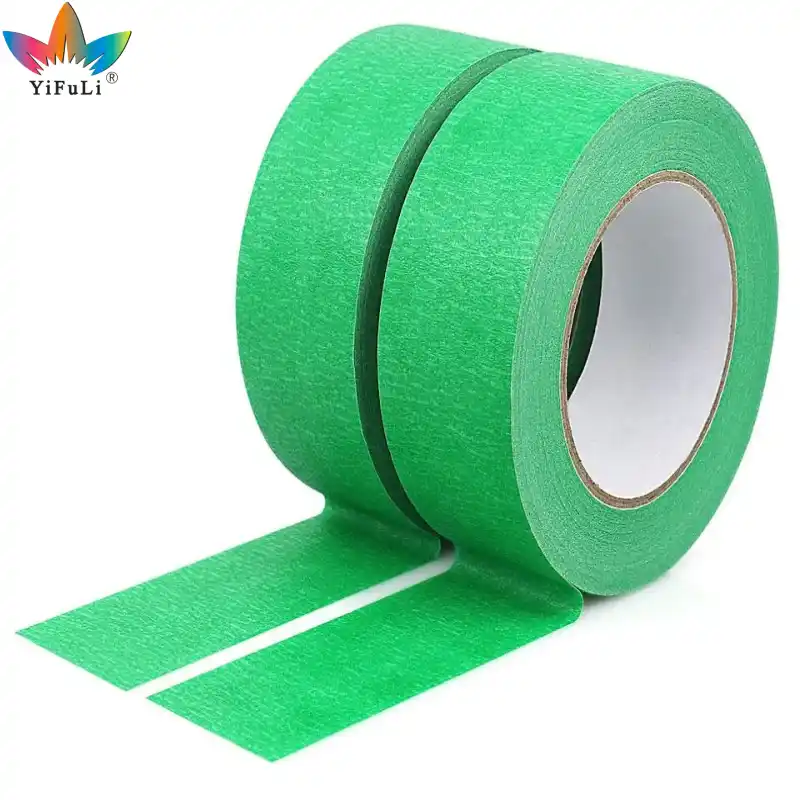
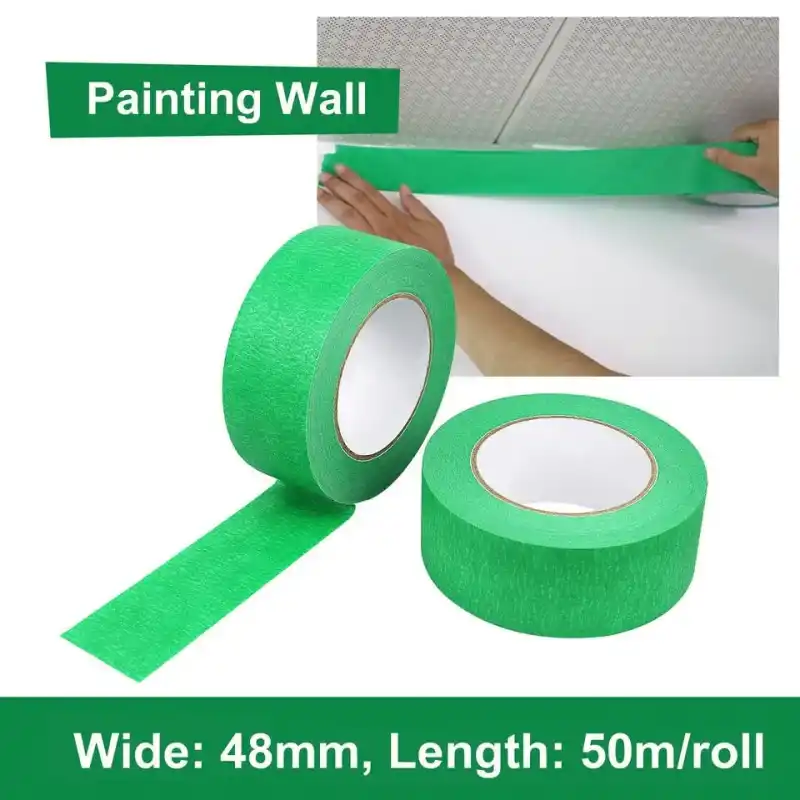
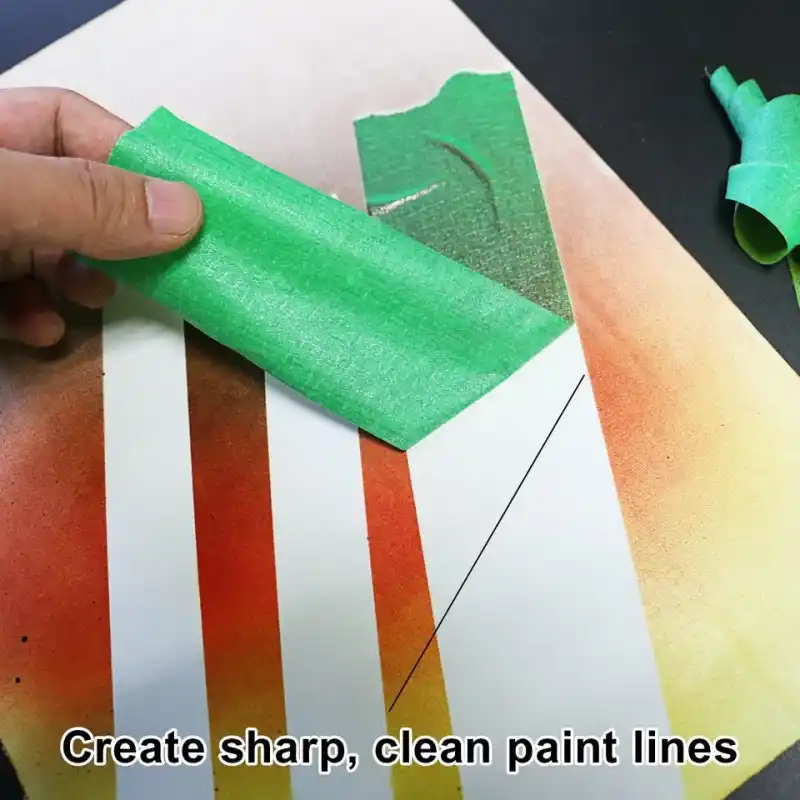

Blue vs. green painters tape: What’s the Difference?
Although blue is the most common painter’s tape color, there are many other colors to choose from. green painters tape vs blue There is not much difference in appearance, but they are made in different ways to suit different use cases.
green vs. blue painter tape Both peel off easily with no sticky residue left. green painter’s tape is designed to protect rough surfaces such as brick and concrete, and blue painter’s tape, while it can protect such surfaces, does not adhere as well as green painter’s tape.
When it comes to color, here’s a handy guide
Pink painter’s tape is typically used on more delicate surfaces, such as hardwood floors, wallpaper, or other finished surfaces.
Yellow painter’s tape is suitable for use on exterior surfaces such as house trim and paneling. Whether it’s made of metal, wood, or vinyl, yellow painter’s tape is great for any material.
Black painter’s tape is suitable for use on a variety of surfaces, whether for indoor or outdoor use. Specifically, it can be used on rough surfaces, including hard surfaces like brick, cement, or untreated wood.
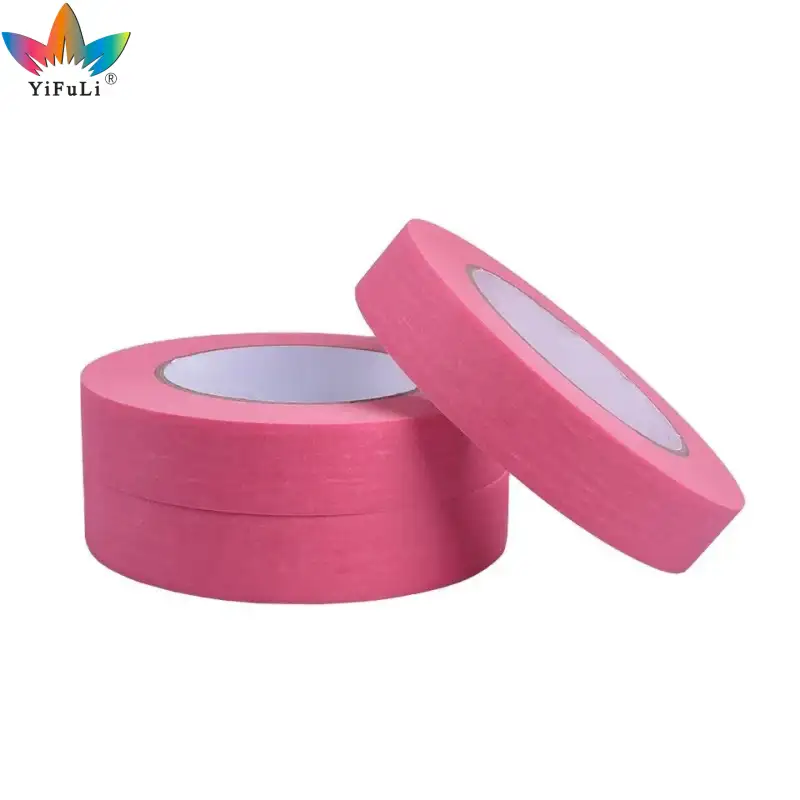


Tips for choosing painter’s tape
- Look. The humidity and solvent resistance of painter’s tape can be judged by its appearance. The best painter’s tape will have a uniform color with no streaking or color buildup. In addition, good painter’s tape has no glue seepage or residual glue on the back, and the paper has no wrinkles.
- Pull. Good painter’s tape has high tensile strength and is not easy to break.
- Shake. High-quality painter’s tape has strong unwinding power. You can shake it when you pull it open. It will not slide down immediately like a yo-yo.
- Touch. You can test it by quickly pulling it apart. After repeatedly pasting it several times, you can use your hands to feel whether the stickiness of the tape has decreased.
- Smell, In order to save costs, some bad painter manufacturers will use gasoline and enzymes to dissolve, so the smell of this kind of painter’s tape is very strong, but now some manufacturers use toluene to dissolve, and the coating process has passed through the fan It has evaporated and there is no pungent smell.
How to Use Painter Tape
- When using painter’s tape, keep the surface clean and dry, otherwise it will affect the adhesive effect of the tape.
- You can apply a certain force when using it so that the masking tape and the adherend can achieve better adhesion;
- There must be a certain tension when using masking tape, otherwise, it will easily fail to stick;
- Because each masking paper has its own characteristics, some unpredictable problems may occur after mixing, so do not combine masking tapes;
- After use, peel off the masking tape as soon as possible to avoid adhesive residue.